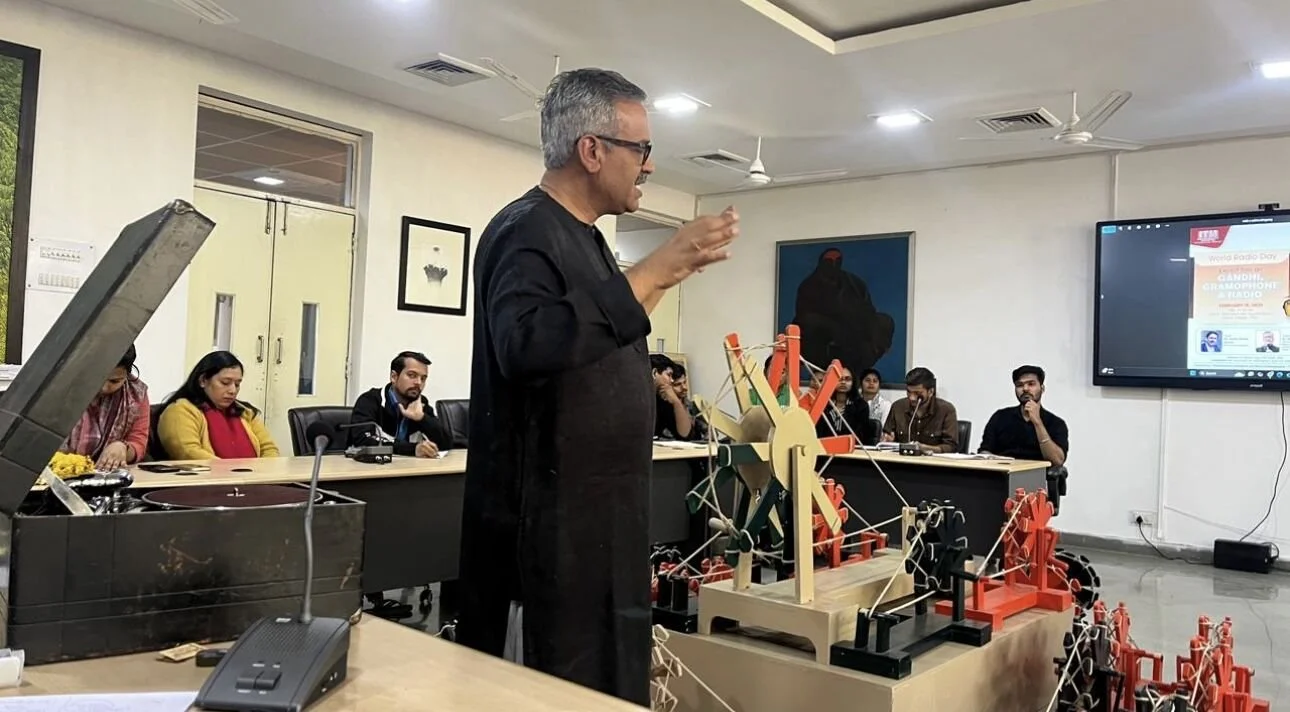Gandhi, the Communicator: From Charkha to Gramophone
Gandhi and Gramophone Session in Gwalior
Gandhi was, in every sense, a remarkable communicator. His communication was never accidental or effortless—it was the result of deliberate discipline, relentless clarity of thought, and a deep understanding of human psychology. Every message he crafted, every word he spoke, every letter he wrote carried purpose.
He prepared rigorously for each of his speeches. Those who worked with him often recalled that he could revise a paragraph dozens of times until it expressed exactly what he intended—nothing extra, nothing missing. He surrounded himself with the most efficient people who could take dictations at his pace, and he reviewed every transcript with care. Even his correspondence was impeccably organised: letters received, letters sent, follow-ups, commitments—all neatly preserved. Gandhi understood that communication was also a form of accountability.
But what made him truly ahead of his time was his ability to embrace new technologies with curiosity rather than hesitation.
In 1931, he cut one of the bestselling gramophone records of that era—his Spiritual Message—released by Columbia Records. To think of Gandhi in front of a recording microphone, speaking to an unseen audience across continents, is itself a profound image. He recognised early on that sound recording would become a powerful archival tool, capable of carrying his voice far beyond where his physical presence could reach.
And when radio broadcasting began to include his speeches, Gandhi adapted immediately.
He modified the tone, structure, and length of his addresses, keeping in mind the format of radio and its time-bound nature. He was acutely aware that many of his radio talks were later circulated on gramophone records. So he timed his sentences, balanced pauses, and ensured that the message would fit perfectly within the recording constraints. This subtle interplay between technology and message, between medium and meaning, shows how Gandhi wasn’t just a communicator—he was a strategist of communication.
I had the opportunity to explore these ideas in depth during a session titled “Gandhi, Gramophone and Radio” at ITM University, Gwalior on the occasion of World Radio Day. The session was an enriching blend of history, technology, and reflection. The engagement with faculty members was thoughtful, but it was the students who made the experience truly memorable.
For most of them, this was their first encounter with a gramophone—a machine that speaks without consuming electricity or the internet. Watching their faces light up as the needle touched the spinning shellac disc was a joy in itself. They were mesmerised not only by the sound but by the simplicity of the mechanism. In an age driven by algorithms, this purely mechanical marvel—with its gentle whirr and warm sound—felt like a rediscovery of wonder.
In many ways, the gramophone is to sound what the charkha is to self-reliance—simple, handmade, meditative, and timeless. Gandhi understood the emotional and symbolic power of such objects. Just as the charkha became a tool for awakening consciousness, the gramophone carried voices that shaped a nation’s imagination.
To see the same sense of discovery in today’s students was deeply fulfilling.


